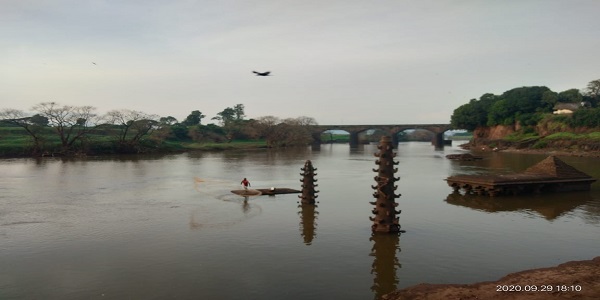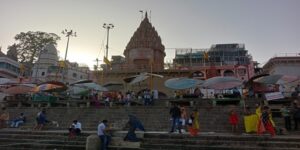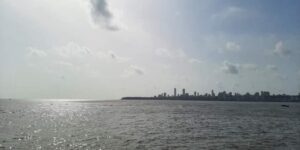Kolhapur is one of those cities in Maharashtra which has rich culture & deep history. The city is located in the west of Maharashtra on the bank of the river Panchganga, surrounded by the Sahyadri mountain range. This city is formerly known as Karvir & one of the oldest religious & trade centers in western India. It is also known as ‘Dakshin Kashi’ (South of Kashi) because of its spiritual history & shrine of Mahalaxmi.
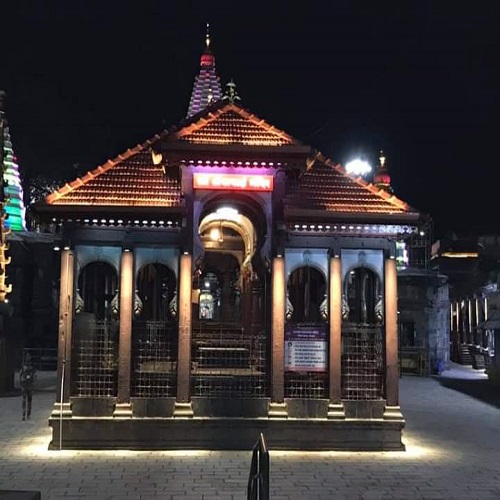
Mythology of Kolhapur
Kolhapur – The name given to the city after Kolhasur, a demon in Hindu mythology. As per Hindu mythology, Goddess Mahalaxmi killed Kolhasur, who oppressed the locals & abused the power of authority. The demon wished Goddess to name the place in his name before his death. Hence the region got its name Kolhapur. Kolhapur is famous for the Shri Mahalaxmi temple. It is a belief that the goddess Mahalaxmi started residing in Kolhapur with her husband, Lord Vishnu.
History
The history of this ancient city is sacred to Hinduism, Jainism & Buddhism & divided into six different periods. The First Maurya period, the second Satvahna dynasty of Andhra, the 3rd was Chalunkya- Rashtrakuta period, and the fourth was the Shilhar-Yadav period which lasted till the 13 century. Bahamani Sultanate of Deccan ruled Kolhapur from the 13 century to the 17 century. After that, the state of Kolhapur was established by Tarabai in 1707 AD and ruled by Maratha till the 18th Century.
Places to visit in Kolhapur:
Mahalaxmi Temple
Goddess Laxmi is also known as Ambabai in Kolhapur. The temple is the most important pilgrim site in India & one of the six abodes of Shakti (Power). This temple was built by the Chalukyas ruler in the 7th Century. Tirumala Venkateswara temple, Kolhapur Mahalaxmi Temple & Padmavati temple – As per Hindu mythology, these temples are visited as a pilgrimage to achieve Moksha.
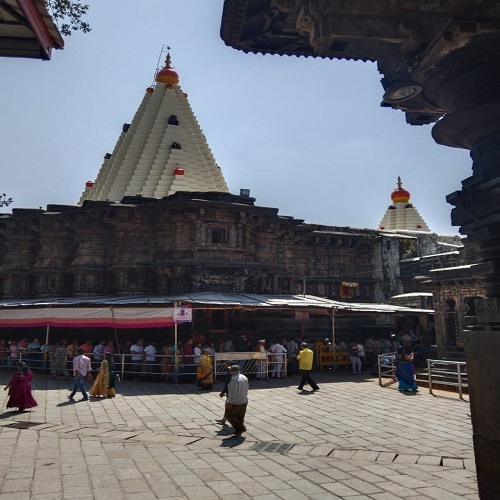
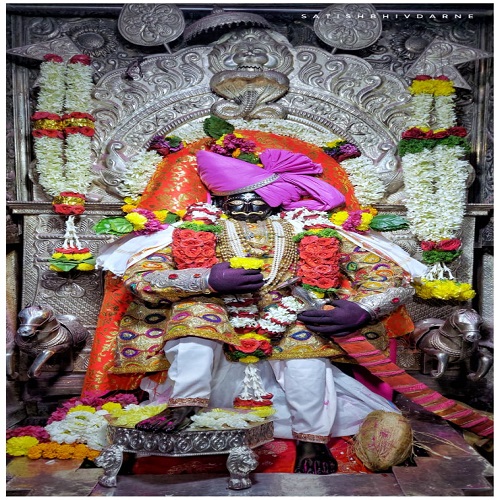
Joytiba Temple
Lord Joytiba (Also known as Kedareshwar) is an incarnation of Brahma, Vishnu & Mahesh. It is a holy site for Hinduism near Wadi Ratnagiri in the Kolhapur district. Legends say that Lord Jyotiba killed Ratnasur & helped Ambabai in her fight with demons. He destroyed Rakhabhog Raksha & Ratnasur Rakshasa & founded his kingdom in the mountain.
Pohale Monastry
Kolhapur Maharashtra – Pohale is a small village in Panhala Taluka, Kolhapur. It is also known as Pohale Leni (Leni means Caves in the Maharashtrian language). These caves have existed since the Buddha era & discovered around the 7th century AD when the kingdom of Kadamba’s reign shifted to the Chalukya dynasty. It is a group of six caves. There are two main caves, one is a school & another is a shrine. The best time to visit this place is post-monsoon.
Binkhambi Ganesh Mandir
It is among the must-visit place in Kolhapur, situated near Mahalaxmi temple. It is a belief that the idol of Lord Ganesha was discovered while repairing the well & then enshrined in the temple. Binkhambi means no pillar. This temple has been built without any pillar support & so this temple is named Binkhambi Ganesh Mandir. This temple was built in the year 1882, but people believed that the idol is much older than the time of its establishment.
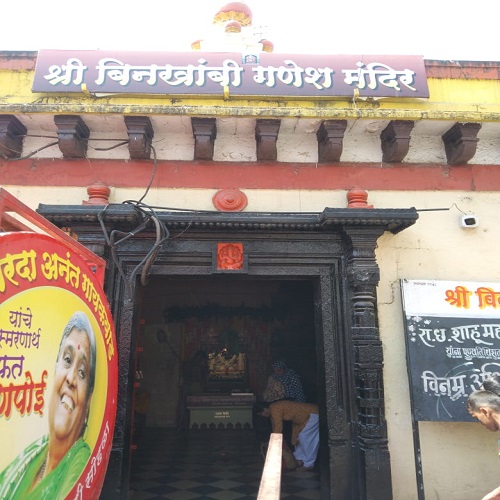
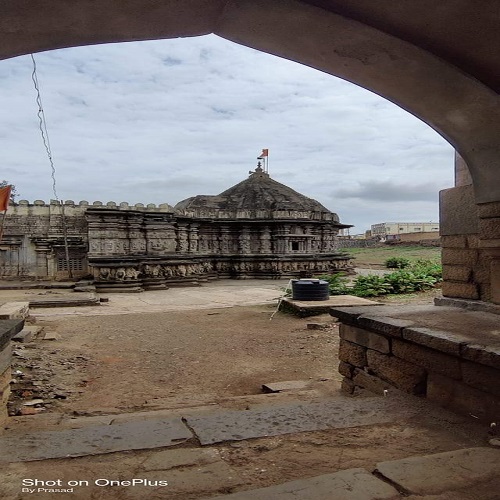
Kopeshwar Temple
Kirdhapur is one of the historical places in Kolhapur district, Maharashtra, on the bank of the Krishna river. This place is famous for the Kopeshwar temple. As per mythology – King Daksha did not like her younger daughter Sati marrying Lord Shiva & he conducted Yagna, to which he did not invite the couple. To confront her father, Sati visited him on Shiva’s Nandi. Daksha insulted her in front of the guest & she jumped into the fire of Yagna and immolated herself. Lord Shiva got infuriated after knowing this & punished Daksha by serving his head & his anger was on the verge of destroying the whole world. Lord Vishnu brought Shiva to Kirdhapur to calm him down. Hence this temple got its name Kopeshwar (Wrathful God). That is why Lord Vishnu is seen in this temple along with Shivling. Nandi is not present in this temple as Sati rode on Nandi while visiting her parent.
Shilhara King – Gandaraditya built the current temple between 1109 and 1178.
Bhavani Mandap
Bhavani Mandap is a historical building situated in the center of Kolhapur city. Shivaji Maharaj II build Bhavani Mandap between 1785 and 1800. It was an important meeting venue in yesteryears. It is said that there is a tunnel leading to Panhala that is 20km away from Kolhapur. It was an escape route for Maratha soldiers.
Narasimhawadi is a small town in Shirol Tahasil in the Kolhapur district. It is also famous as Narsobawadi & gets its name from Shri Narsimha Saraswati (Guru of Dattatreya Sampradaya). He is considered an Avtar of Lord Dattatreya. Narasimhawadi is a major pilgrimage spot for the Dattatreya community. This place has a rich history & the more you learn about the place – the more you learn about Indian diversity.
Traditional Maharashtrian Veg food @ Kolhapur
Kolhapur has always been a princely state from the beginning. Traditionally Kings used to go hunting & Game meat, and Wild Boar & Partridge became part of the Royal menu. The Portuguese introduced Chilies to India at the end of the 15th Century. Before that, the Indians used Black Pepper in their recipes for spiciness.
Let’s dig a little deeper & find out why we Indian love to consume spicy dishes. Countries that fall under the tropics & equator use varieties of spices & chilies in their cuisine that make the food spicy & aromatic. India, Thailand, Mexico, and Jamaica are well known for their spices dishes. Within India, the hotter states have Spicer cuisine than others.
Three popular theories explain why people in hot regions consume spicy dishes:
- Chilies grow best in hot Climates. Andhra Pradesh, Karnataka, Maharashtra, Odisha, Tamil Nadu, Bihar, Uttar Pradesh, and Rajasthan produces 80% of chilies.
- Spicy food has antimicrobial properties that help to preserve food for longer. Microorganisms do not survive in cold climates but thrive in hot weather. People in hot regions use spices & chilies in their recipes, which helps to preserve them for a little longer.
- Chiles & spices help to increase metabolism that raises the human body temperature, making it sweat. Sweating helps to cool down your body and maintain the body temperature as per conditions. (https://blog.byjus.com/the-learning-tree/knowledge-vine/hot-places-spicy-food/)
It is clear to understand why people eat spicy & aromatic food in the Kolhapur region. People consume nonveg food for which Kolhapur is famous, but that is not true. As discussed in my earlier blog too, every Indian cooks veg food in their kitchen & every region has more vegetarian specialties than non-veg.
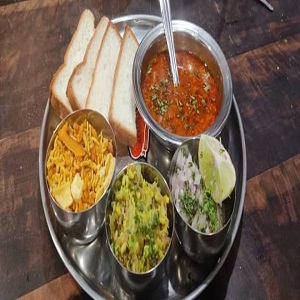
Kolhapuri Misal
Hot, spicy & one of the famous dishes from Kolhapur. Every region of Maharastra serves misal. The taste & preparation is different from each other. The visit to Kolhapur will not be complete till you try the Kolhapuri misal. In Kolhapur, it is served with bread & also be eaten with Bhakri.
Modak
Modak is the most popular Indian sweet served to Ganpati in the state of Maharastra. The dough is made of rice flour & filled with grated coconut & jaggery. During Ganesh Chaturthi, puja concludes by offering 21 Modak to Lord Ganesha.
You will be surprised to know that the Japanese worship Lord Kangiten (the Japanese version of Lord Ganesha) and also offers sweets similar to the modak called Kangidan. We all know Lord Ganesha is known as Vinayaka in India, and Lord Kangiten is known as Binayaka-Ten in Japan. Both God is worshiped as a God of good fortune.
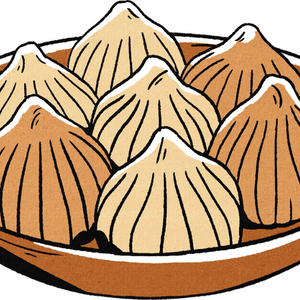
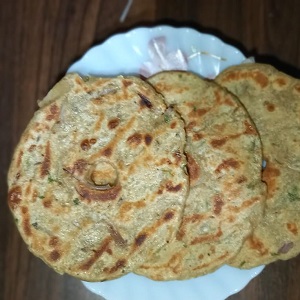
Thalipeeth
Thalipeeth is an Indian flatbread native to the Maharashtrian region. The flour of Thalipeeth is known as Bhajanee – prepared from roasted grains (rice, wheat, bajra & jowar), legumes & spices. This dish is popular in Maharasthra & North Karanataka, Usually served with butter. Bread in the Indian region was found as early as the Indus valley civilization. During that period, people used to prepare from barley. But we developed different types & styles of bread over time.
Thecha
Chutney originated in India around 500 BCE. Thecha is a spicy chutney (condiment) from Maharashtra. It means crushed or grounded. Thecha made their way after chilies were introduced to India. Kolhapuri thecha is one of the spiciest Indian chutneys. The primary ingredient of Kolhapuri Thecha – Red Chilli pepper, garlic, and peanuts tempered with oil with various spice mixes, served with Bhakri or Thalipeeth.
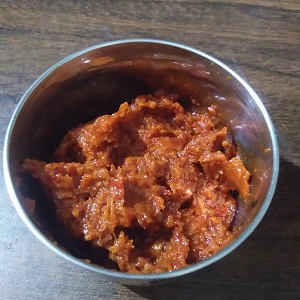
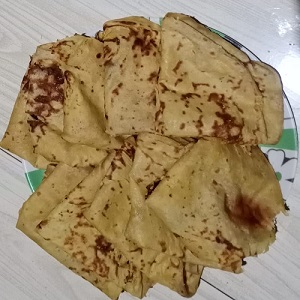
Puran Poli
It is sweet flatbread & one of the Maharashtrian dishes prepared during all auspicious occasions & festivals. This dish is famous all over South India, but the Maharashtrian kitchen has a special place for it. Puran Poli recipe is mentioned in Manucharitra- (14th Century Telgu encyclopedia compiled by Allasani Peddanna).
Bhakri
Bhakri is a round flatbread that originated in the Indian subcontinent. It is found throughout Maharashtra, Gujrat & Karnataka & Goa regions. Different millet like Jowar, Bajra & Nachini is common grains used to make bhakri. Bhakri has a rich history attached to Maharashtra. Maratha soldiers used to consume Bhakari during wartime. The Maharashtrian family uses bhakri in their everyday meal. It is very healthy & nutritious.

Other veg & non-veg varieties famous around Kolhapur are – Veg Kolhapuri, The Bharli Vangi, Tambra and Pandra Rassa, Kolhapuri Mutton Dry, and many more. Explore the dishes as per your liking
Every Indian city has deep roots in history & the place itself talks about the same. Visit the town & city in India & experience the culture which talks about the history of that place. Thanks to Prashant Patil for his guidance for this blog.
You will find interesting facts & stories about Indian food in each corner of India. Indian Food Therapy tries to bring the story & history of the food we relish in an everyday meal. Our traditional eating habits & regional recipes show the rich cultural background & how food plays a vital role in our day-to-day life. So, keep reading our blog for more information & homemade veg recipes.
